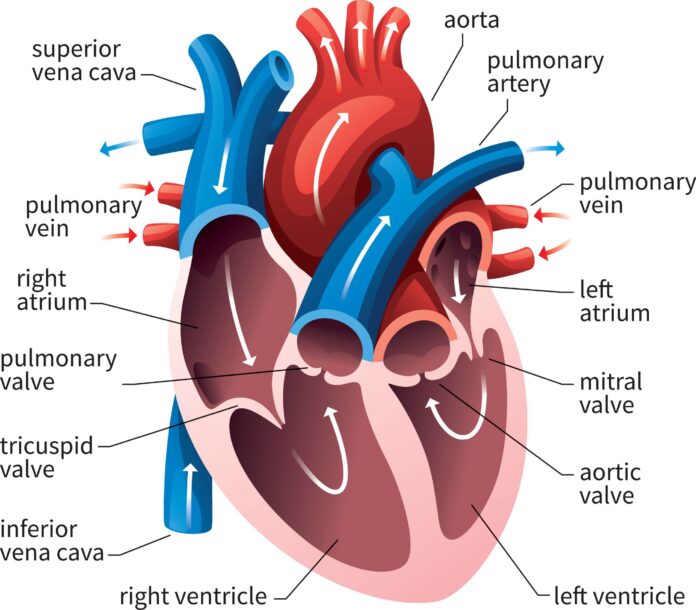The Structure of Heart: Nature’s Remarkable Pump
The heart stands as an incredible muscular organ, tirelessly pumping blood throughout our bodies day and night. This fist-sized powerhouse drives our circulatory system, sustaining life through its rhythmic contractions and precise chambers.
External Anatomy:
The heart sits within the protective thoracic cavity, nestled between our lungs behind the sternum. A specialized membrane called the pericardium encases the heart, providing lubrication and protection during its constant movement.
The Four Chambers:
Inside the heart, four distinct chambers work together to maintain proper blood flow. The upper chambers, called atria, receive blood from various parts of the body. The lower chambers, known as ventricles, pump blood out to the lungs and body with tremendous force.
Right Side Function:
The right atrium accepts deoxygenated blood from body tissues through large veins. Blood flows through the tricuspid valve into the right ventricle. The right ventricle then pumps this oxygen-poor blood to the lungs for replenishment.
Left Side Function:
Freshly oxygenated blood from the lungs enters the left atrium through pulmonary veins. The mitral valve guides this oxygen-rich blood into the left ventricle. The muscular left ventricle drives blood throughout the entire body.
Heart Valves:
Four vital valves ensure one-way blood flow through the heart’s chambers. The tricuspid and mitral valves control flow between atria and ventricles. The pulmonary and aortic valves regulate blood flow leaving the heart.
The Heart Wall:
Three distinct layers form the heart wall: the outer epicardium, middle myocardium, and inner endocardium. The myocardium contains specialized cardiac muscle tissue that enables powerful contractions.
Blood Supply:
The coronary arteries deliver oxygen-rich blood to the hardworking heart muscle. These vessels branch across the heart’s surface like a crown, hence their name. Several major coronary arteries supply different regions of heart tissue.
Electrical System:
The heart’s natural pacemaker, the sinoatrial node, generates electrical impulses for coordinated contractions. Special conducting fibers carry these signals throughout its muscle. This electrical system maintains regular heartbeats without conscious control.
Conclusion:
The heart’s intricate structure showcases nature’s brilliant engineering in human anatomy. Each component plays a crucial role in maintaining life-sustaining circulation. Understanding this remarkable organ helps us appreciate its vital importance to our survival.
This complex organ demonstrates incredible efficiency through its specialized chambers, valves, and electrical system. Modern medicine continues to uncover new aspects of cardiac structure and function. Regular exercise and proper nutrition help maintain this amazing organ’s health throughout our lives.

